We may receive a commission when you use our affiliate links. However, this does not impact our recommendations.
All hardwoods have vessels (little pipelines) that are used in sap production. The size and distribution of these vessels vary among species; some are visible to the naked eye. When the vessels are cut across the end grain, they’re often referred to as pores, thus hardwoods are known as “porous woods” (see below for further classification). The size, number and distribution of the vessels affect the appearance and uniformity of hardness in a particular wood. Softwoods, which don’t have pores, are known as “non-porous woods.”
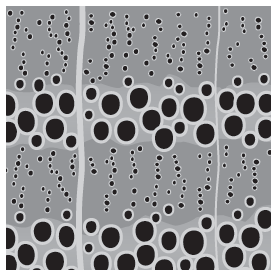 Ring Porous
Ring Porous
In some species (e.g. oak and ash), the largest pores are in the earlywood while those in the latewood are more evenly distributed and uniform in size. These woods typically have distinct figures and patterns, and the uneven uptake of stain (the large pores soak up more color) make the figure more pronounced. These are also known as open-grain woods.
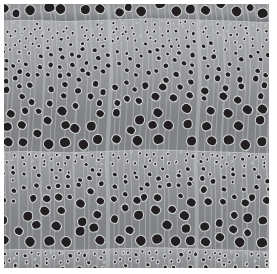 Semi-ring Porous or Semi-diffuse Porous
Semi-ring Porous or Semi-diffuse Porous
In some species (e.g. black walnut and butternut), pores are large in the earlywood and smaller toward the latewood, but without the distinct zoning seen in ring-porous woods. Also, some species that are usually ring-porous (e.g. cottonwood) occasionally tend toward semi-ring porous.
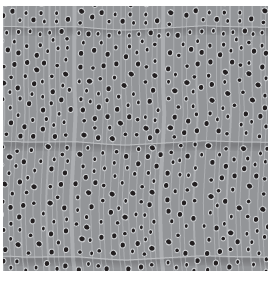 Diffuse Porous
Diffuse Porous
In some species (e.g. maple, cherry and yellow poplar) the pores are distributed fairly evenly across the earlywood and latewood. Most domestic diffuse-porous woods have relatively small-diameter pores, but some tropical woods of this type (e.g. mahogany) have rather large pores. These woods usually have even uptake of stain (there seems to be no scientifically proven explanation of the cause of blotching). These are also known as closed-grain woods.
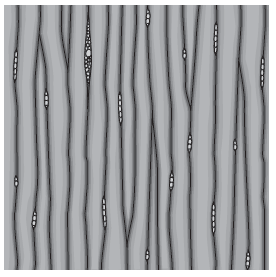 Non-porous
Non-porous
Softwoods don’t have vessel cells (water is conducted in the living tree in tracheid cells). Different softwoods have different growth-ring characteristics however. In white pine, the rings are non-distinct, and stain uptake is fairly even, as in diffuse porous woods. In yellow pine, where the rings are clearly visible, stain uptake in earlywood is more pronounced than in latewood, as in ring-porous woods.
Download the free PDF:
Wood_Types_Guide
– By R. Bruce Hoadley; Illustrations by Mary Jane Favorite, based on photographs from R. Bruce Hoadley’s “Understanding Wood”
Here are some supplies and tools we find essential in our everyday work around the shop. We may receive a commission from sales referred by our links; however, we have carefully selected these products for their usefulness and quality.



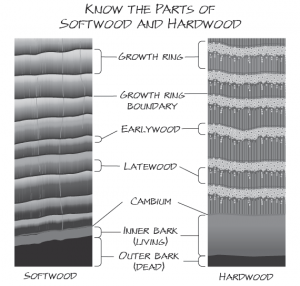




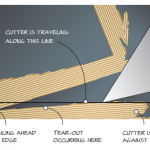

Tom,
The image of non-porous wood taken from Hoadley’s book, while an accurate one, is a tangential section from a conifer, not a cross-section as shown for the ring porous, semi-diffuse porous, and diffuse porous woods. The lay woodworker is getting an incorrect view of what non-porous woods look like.
Sterling Sam, Professor of Botany/Instructor of Wood Technology